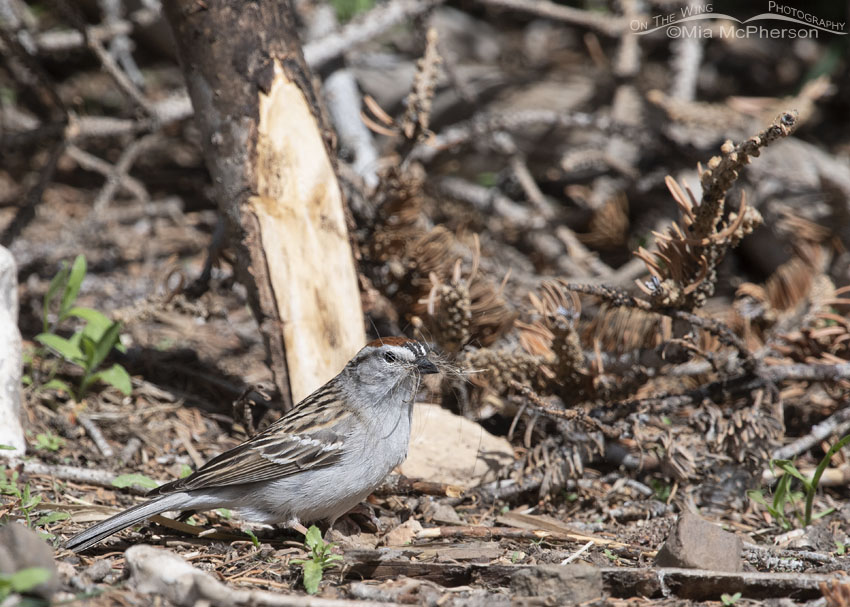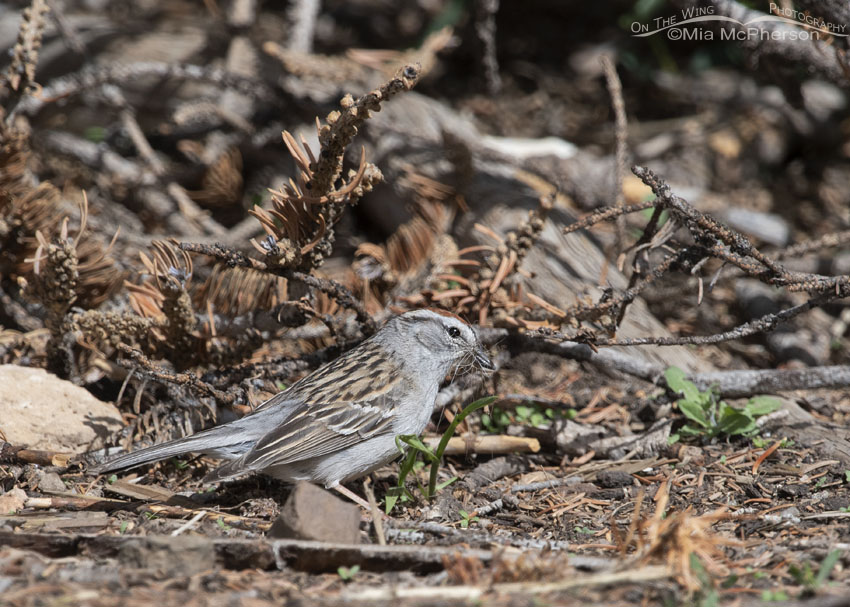 Chipping Sparrow with nesting material on the forest floor – Nikon D500, f7.1, 1/1250, ISO 500, Nikkor 500mm VR with 1.4x TC, natural light
Chipping Sparrow with nesting material on the forest floor – Nikon D500, f7.1, 1/1250, ISO 500, Nikkor 500mm VR with 1.4x TC, natural light
While I was up in the High Uintas the last day of May I saw plenty of signs of birds getting ready to nest and some birds that were nesting already. Spring comes a bit later up in the Uinta National Forest than it does down here in the Salt Lake Valley so some of these birds in the high country are just now beginning to build their nests while here in the valley some chicks have already fledged.
While photographing some Pine Siskins that were foraging and gathering nesting materials I caught some movement out of the corner of my eye and spotted a Chipping Sparrow with nesting materials in its bill. The sparrow was at the edge of a disperse camping site and the setting there wasn’t too appealing but I took photos of the sparrow any way.
 Chipping Sparrow with nesting materials – Nikon D500, f7.1, 1/1600, ISO 500, Nikkor 500mm VR with 1.4x TC, natural light
Chipping Sparrow with nesting materials – Nikon D500, f7.1, 1/1600, ISO 500, Nikkor 500mm VR with 1.4x TC, natural light
I can’t honestly recall seeing a Chipping Sparrow with nesting material before so this may have been a first for me. The setting is very cluttered and I wish I had been able to takes images of this bird out in the open where it stood out more from the forest floor but I think the sparrow stands out well enough from the clutter on the ground.
Chipping Sparrows are medium sized sparrows that have rufous caps and have a black stripe running from their bill past the eye and to the back of their heads. Their preferred habitats include the edges of grassy woodlands, brushy pastures, lawns, gardens, parks and open forests. They feed on seeds and insects on the ground and will visit feeders with cracked corn, millet and sunflower seeds. Chipping Sparrows lay 2 to 5 eggs which hatch in 11 to 14 days. Only the female incubates the eggs and during incubation the female develops a bare patch on her belly that fills with fluids which is believed to help with heat transfer to the eggs.
Maybe someday I will be able to find a Chipping Sparrow out in the open with nesting material in its bill but for now these photos will do.
Life is good.
Mia
Click here to see more of my Chipping Sparrow photos plus facts and information about this species.


Fascinating pics and your narrative is really interesting. Thanks Mia.
I did not know about the bare patch on the belly that fils with liquid-thank-you for enlightening me. Always enjoy their chipping sound.
Nice